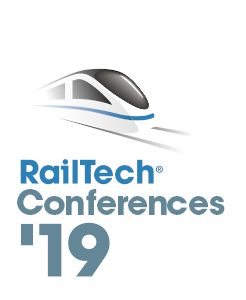 Jérémy Debast
Jérémy Debast
Senior ERTMS/ETCS Signalling Engineer at Infrabel
Presentation title:
How Infrabel superimposed ETCS Level 2 on existing line-side signalling
Summary:
In July 2018, Belgian rail infrastructure manager Infrabel has deployed ETCS Level 2 Full Supervision on railway line 73, between De Panne and Diksmuide in the province of West Flanders. It marked the first time Infrabel deployed ETCS Level 2 on a conventional railway line, superimposed upon the line-side signalling. Belgium thus even became the first of all the countries with a master plan to equip their nationwide rail networks with ETCS to do so.
Infrabel installed ETCS Level 2 Full Supervision on conventional railway line 73,
superposed upon the line-side signalling
The achievement not only established Infrabel’s role as an ETCS pioneer but also marked an important milestone in the company’s “Master Plan ETCS” which aims to shift to an ETCS-exclusive rail network by 2025. For Infrabel, the commissioning of line 73 serves a pilot project from which the company will learn the necessary lessons in order to start the rollout phase of ETCS Level 2 in 2019.
In the project’s preparatory stage, the measurement of the trackside distances and the on-site testing were facilitated by a dedicated ETCS test train, which Infrabel specifically developed for its ETCS Level 1 projects and is now being updated with an automatic signalling objects recognition system.
Nonetheless, the realisation of the project remained a technical challenge, as it is much harder to equip a conventional line with ETCS, superimposed upon line-side signalling, in a brown field than it is to equip a green field high-speed line. First of all because the existing line-side signalling limits flexibility. Second, because there are far more possibilities in routing, more speed limits, and more operational scenarios to be covered, both in nominal and degraded mode. All of this generated more “rules” that had to be translated into “ETCS language”.
Moreover, Infrabel had to take into account that there would be mixed traffic on the line, that is both ETCS compatible trains with different braking capabilities and non-compatible trains, all the while guaranteeing a fall back to the lateral signalling with national Automatic Train Protection. Finally, Infrabel had to develop an interface with the existing electronic interlocking both in normal as degraded situations. It is the combination of all those things that made this specific project particularly challenging.
Speaker biography:
Jérémy Debast has been involved in ERTMS projects ever since he began working for Infrabel in 2009. As design engineer he was involved in both ETCS Level 1 and Level 2 projects, defining amongst other things the functional user requirements for the ETCS Level 2 program, which resulted in the first ever installation of ETCS Level 2 on a conventional Belgian railway line. As head of the ETCS Generic Prescriptions team, Debast has improved the principles and rules of ETCS Level 1 implementation. Currently, Debast is preparing the generic application case for ETCS Level 2, clearing the way for the roll out phase of the Level 2 program in 2019.
